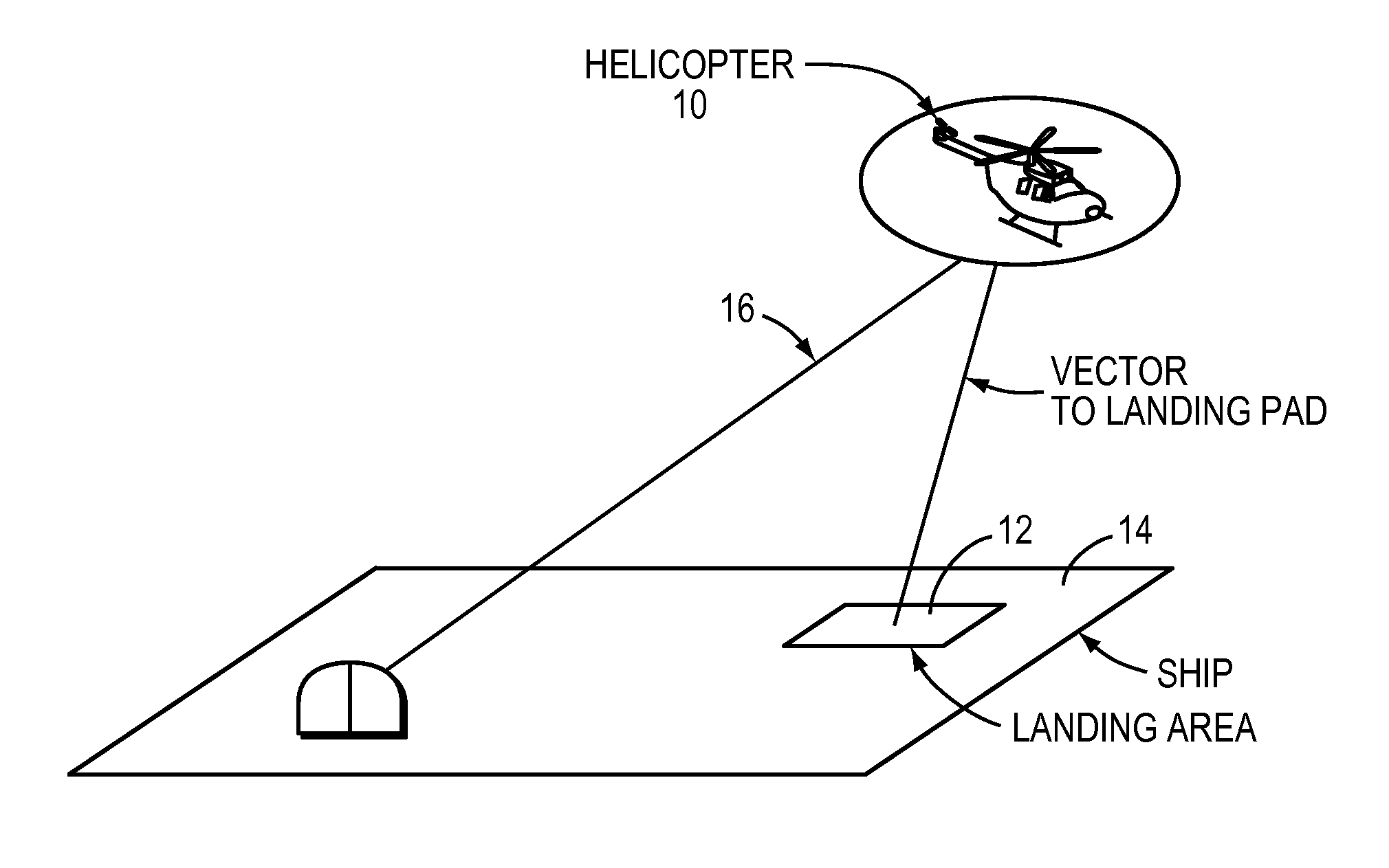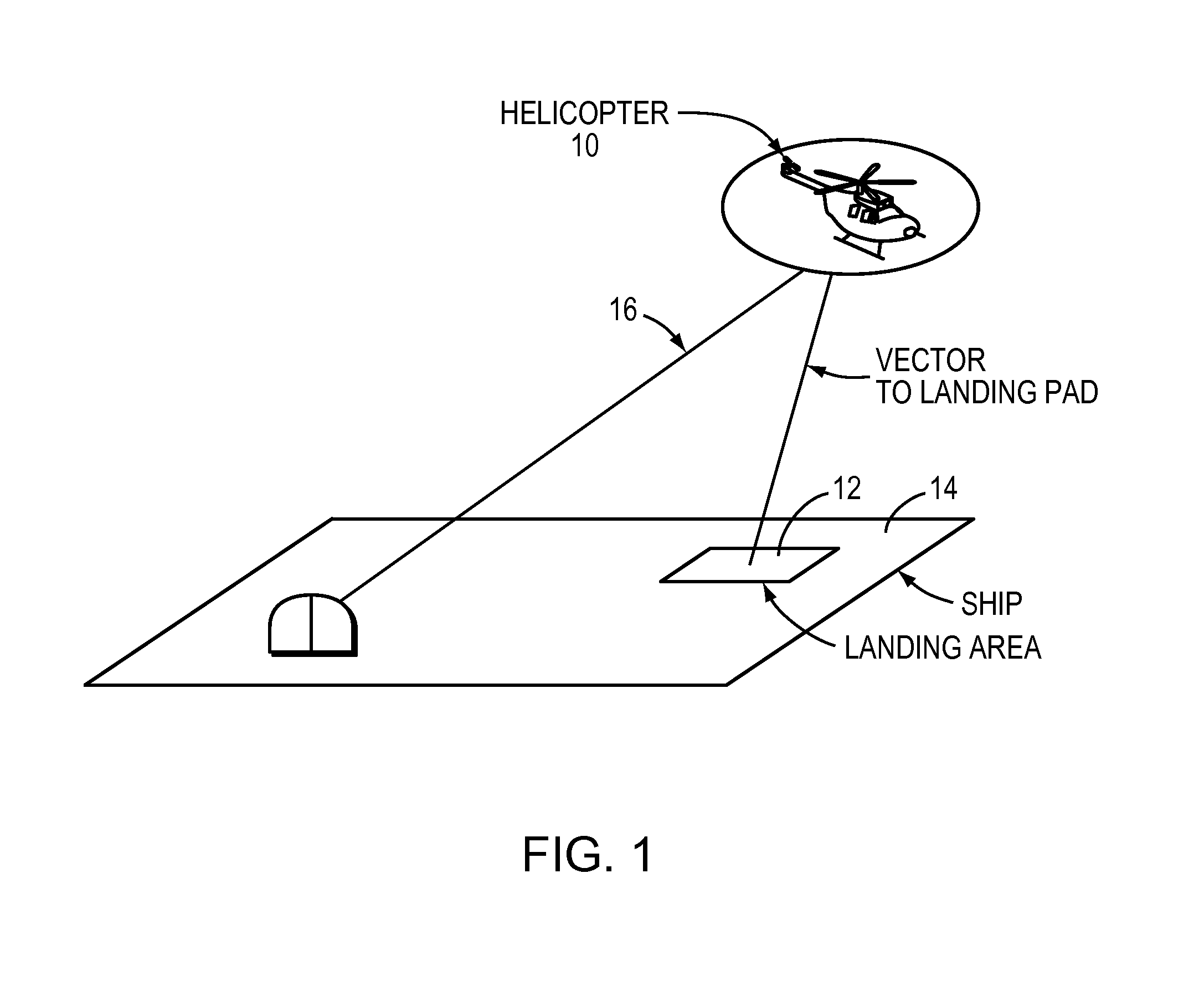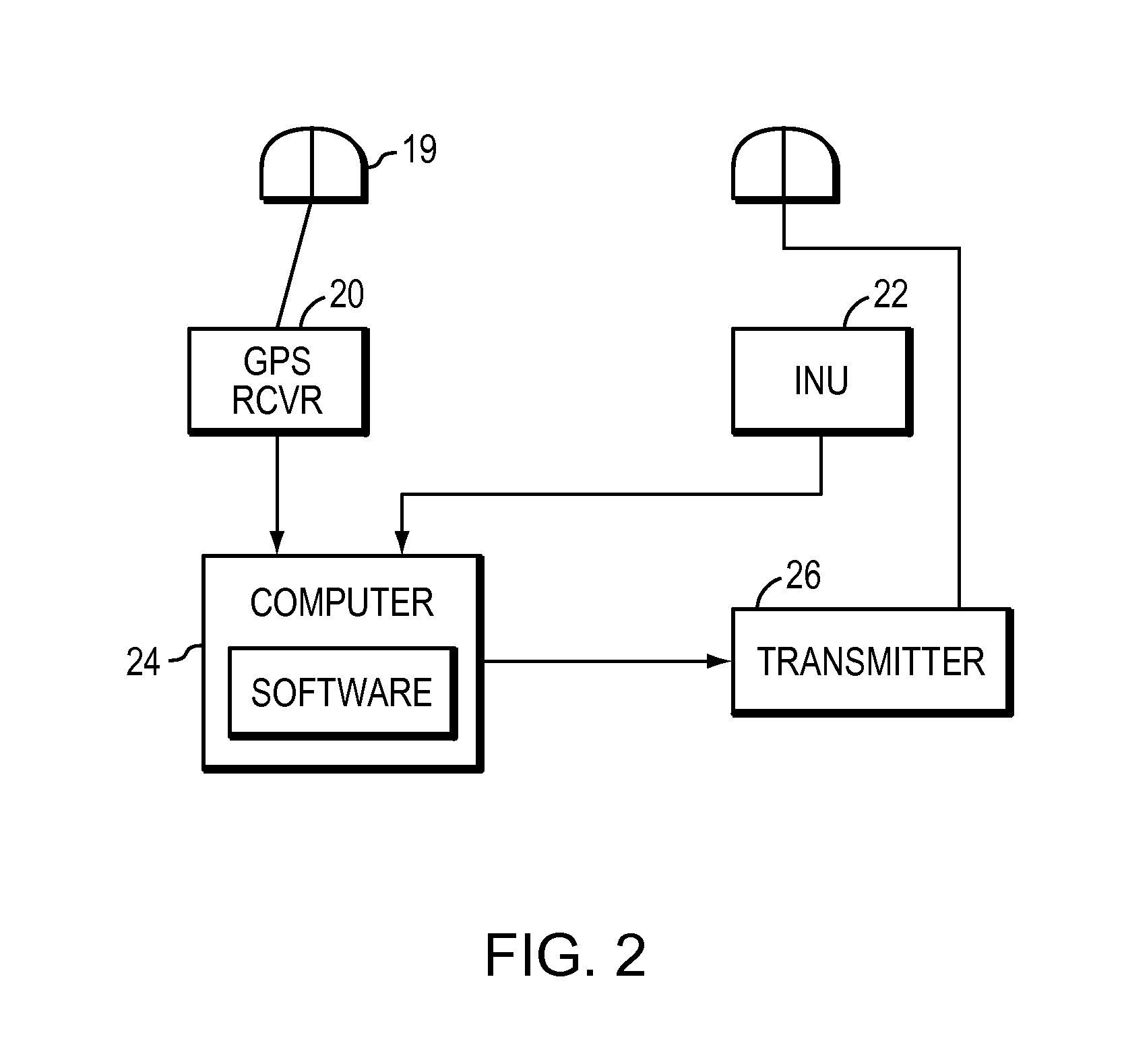Helicopter ship board landing system
a technology of helicopter ship and landing system, which is applied in the direction of process and machine control, instruments, navigation instruments, etc., can solve the problems of less than single point accuracy in relative positions between the two systems, and effectively dampen the effect of noise on both systems, so as to reduce the uncorrelated low latency position error, high accuracy, and low latency
- Summary
- Abstract
- Description
- Claims
- Application Information
AI Technical Summary
Benefits of technology
Problems solved by technology
Method used
Image
Examples
Embodiment Construction
[0024]As shown in FIG. 1, the invention relates to the positioning of an aircraft 10, such as a helicopter, for landing on a designated pad 12 on the deck 14 of a sea going vessel. Both the ship and the aircraft have navigation arrangements described herein and they are provided with a wireless link 16 for transmission of data from the ship to the aircraft.
[0025]With reference to FIG. 2, the ship carries a navigation unit 18 comprising a GPS antenna 19, a GPS receiver 20, an inertial navigation unit (INU) 22, a computer 24 and an RTK transmitter 26. The GPS receiver 20 provides position readings but at a rate that is to too low for the operations contemplated by the invention. These readings are used by the computer 24 to update the INU 22, which is subject to long term drift but provides position data at a relatively high rate. An arrangement for integrating an INU with a GPS receiver is described in “OEM4 Inertial: An Inertial / GPS Navigation System on the OEM4 Receiver”, Proceedin...
PUM
 Login to View More
Login to View More Abstract
Description
Claims
Application Information
 Login to View More
Login to View More - R&D
- Intellectual Property
- Life Sciences
- Materials
- Tech Scout
- Unparalleled Data Quality
- Higher Quality Content
- 60% Fewer Hallucinations
Browse by: Latest US Patents, China's latest patents, Technical Efficacy Thesaurus, Application Domain, Technology Topic, Popular Technical Reports.
© 2025 PatSnap. All rights reserved.Legal|Privacy policy|Modern Slavery Act Transparency Statement|Sitemap|About US| Contact US: help@patsnap.com



